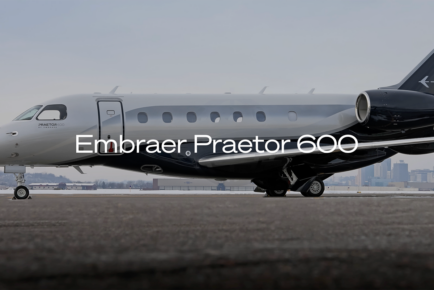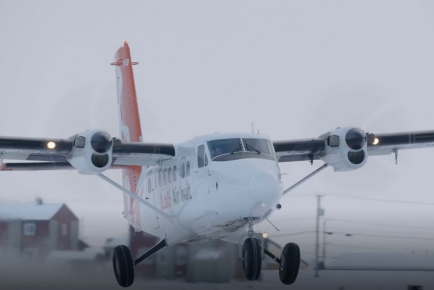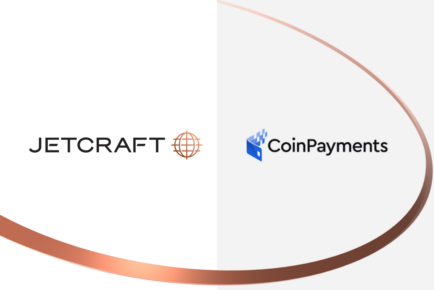
Both environmental conditions and weather are intertwined and together they can significantly impact avionic equipment selection and performance. The following paragraphs will address that shared relationship and the influence it has on aircraft operations and maintenance.
Understanding weather is not just knowing how to avoid storms or turbulence. You must understand the different types of environment and weather – the impact and equipment to detect and protect against these are listed for each event.
The environment and weather can impact all phases of flight and later ground storage of an aircraft, including layovers during trips. Its effect can be immediate, slow to act or simply hidden, like corrosion or the intermittent failure of avionics components sensitive to extreme heat and cold.
Many people don’t realize that electronics are thin adjacent layers of different natural or man-made materials that are highly sensitive to heat, cold, static and moisture. The more we miniaturize avionic components, the harder it will be to minimize environment and weather impacts.
When trading an aircraft, always look carefully at the maintenance records. In the instance of repeat entries for the same problem ensure the last one shows a clear and concise resolution that makes sense. This will help to prevent being stuck with an avionics lemon.
RECENT DEVELOPMENTS
Recent technology developments have integrated the display of weather, terrain, traffic and moving maps on both primary and secondary cockpit displays. The weather itself comes from two sources; on-board radar and external derived satellite data. Equipage for weather detection has come a long way over the last few decades, and while ‘a weather radar’ is still a weather radar, it is common in today’s environment for a radar system to include vertical profile for cloud tops, turbulence, wind shear and lightning detection, along with four bands of color for precipitation intensity.
While weather radar is real-time and subject to maximum range capability, a reliable weather service has some time delay of data but is virtually unlimited in its coverage. Along with maps, weather services provide much more data and therefore more of a forecast, enabling predictive planning before and during the flight. Both types of weather detection have their strengths and weaknesses but complement each other during flight operations.
Some legacy business jets require expensive avionic upgrades to display weather video on cockpit primary flight displays. As a general rule if the displays are flat panel then video may be available either standard or as an option. Electronic flight bags provide an alternative for cockpit map and weather displays.
With commercial off the shelf (COTS) such as iPads finding certification and operational acceptance, the cost is much less than an upgrade. However having all the primary map, terrain, traffic, weather, navigation and aircraft performance right in front of both pilots is clearly optimal.
SITUATIONAL AWARENESS
When it comes to human factors and situational awareness in and around airports, primary flight displays can take second place to heads-up displays (HUD). When you add enhanced vision systems (EVS) to the HUD, the weather concerns of snow, rain, smog, haze, fog, dust and night-time visibility are greatly reduced. In fact when properly trained, HUD operators can improve the weather and situational experience dramatically in all phases of flight.
For example, some experienced HUD operators use EVS and its nighttime infrared vision to assist in the analysis of questionable cloud tops with regard to the potential for turbulence and wind shear, shown differently on radar and weather displays. Having this additional tool helps operators make informed and safe weather avoidance decisions.
Enhanced vision that sees through smog or haze can help map coastlines and other terrain features, enhancing situational awareness and adding to the pilot’s orientation safety kit. Remember, enhanced vision comes in different flavors, and its ability to penetrate the various weather phenomena vary significantly between the use of cooled and uncooled systems. Cooled systems may also see the approach lights through the various weather conditions while new LED approach lights with infrared emitters are in development in the US and Europe at this time.
Enhanced vision typically cannot see through pure cloud. While this is usually not a concern, at low altitudes during an approach, where it can sometimes be foggy, there is a limitation to operational performance. New avionic technologies akin to the ‘holy grail’ of “always seeing as if on a clear day” are now emerging. Examples of complementing avionics that will ultimately enable the aircraft to see through all weather are a combination of multi-spectral cameras, passive millimeter wave technology and (although not real time) the mature and ever improving synthetic vision systems.
Today in the US, a program exists for surface movement guidance control (SMGCS) and low vision operations (LVO), where ground movements are dramatically improved in weather-induced poor visibility conditions. Apart from lighting and surface marking enhancements, the FAA is reviewing the use of own-ship position and enhanced vision while on the ground to provide approvals of surface movement during low visibility events.
PROTECTIVE PAINT AND ANTENNAS
Electrical bonding, static and lightning protections are significant maintenance and operational goals on an aircraft. Behind the aircraft radome is situated the radar that must be able to see through it. Radomes are not metal but have lightning diverter strips to ensure high atmospheric static discharges are dissipated correctly into the metal tube of the aircraft. As composites become more the construction norm, concerns around electrostatics is greatly increased and protections need to be well maintained.
Specifically, the electronics in avionics and other aircraft systems are today protected from high-intensity radiated fields (HIRF). HIRF protection is elaborate and mostly internal to the avionic boxes, but in modern jets avionic boxes have evolved into card cage assemblies for less interconnection, space, weight and more ease of access. HIRF can emanate from the aircraft itself (typically antenna radiated), but a weather event could include solar flares. The interference also may be external, but man made instead, such as emanating from the thousands of transmission towers across our landscape.
When trading an aircraft always carefully inspect the radome and adjacent nose for good condition of anti-static paint finish. Have the static wicks on trailing edges and wing tips checked. Those require both low voltage bonding and high voltage static discharge checks, but even just a visual inspection for wear and tear will be helpful. Make sure electrical bonding straps are properly intact as well.
Generally the condition of aircraft paint and antennas can significantly reduce weather impacts. From electrostatic lightning to hidden corrosion from humidity and rain, environmental effects of weather dramatically increase as environment and weather proofing of an aircraft decreases.
WEATHER FORECAST
The ability to bring weather forecasting right into the cockpit and display it where it matters is a huge benefit to pilots. Domestic and international weather services are increasing and as ADS-B ground stations become active an additional data-based service will be provided for UAT equipped GA aircraft.
On another level, and from a truly international perspective, Australia is ahead of the pack when it comes to embracing ADSB.
Also the recent acceptance of low-vision based operations by ICAO and particularly a commercial HUD equipage mandate decision by China’s CAAC, clearly demonstrate how aviation authorities intend to reduce weather impacts across the globe.
As our airspace is being transformed with next generation trajectory-based operations, weather, traffic and terrain impacts become more of an issue. Those aircraft properly equipped and maintained will be able to take full advantage of new 4D operational elements. They will remain in control of weather impacts and not subject to them.
Environment and weather impacts permeate across all avionic systems, affecting their ability to perform as designed. This effect can be both short- and long-term, and when a cause of visible or hidden damage, may be a factor in aircraft transaction decisions.
Vigilant operators who are trained to use and ensure the proper service of avionics will be thankful of their investment. This ensures adequate preparation for each and every flight because environment and weather are factors in all of them.
Ken Elliott is an avionics veteran of 40 years and more recently focused on NextGen. His work within the NextGen Advisory Council sub-committees brings him close to current and intended development effort. Equally, his specialization in low-vision operations provides a deeper insight into one of the pillars of NextGen. Ken has served the aviation industry on three continents from light GA to large corporate aircraft. His current employer Jetcraft is a leading aircraft brokerage company with worldwide presence. More from www.www.jetcraft.com, email: [email protected]
SIGN UP FOR OUR MONTHLY JETSTREAM RECAP
Don't miss future Jetstream articles. Sign up for our Jetcraft News mailing list to receive a monthly eblast with links to our latest articles. Click to join the 1,800+ subscribers on our mailing list.





